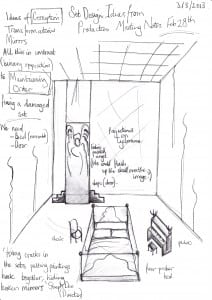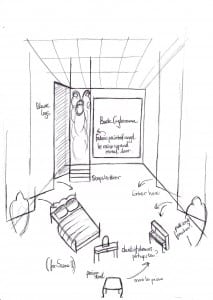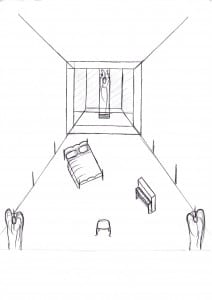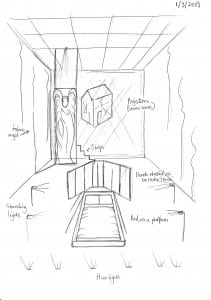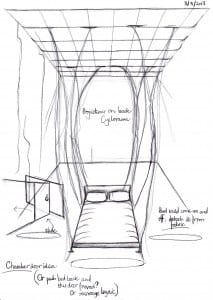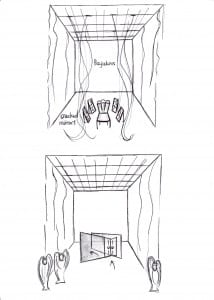An interview I took part in to analyse the role of Producer.
Q: What made you want to assume the role of producer?
A: Being the producer of a production is something that I had never done. I’d managed a stage school but never an actual production. I like a challenge and decided to give it a go. I like administration and I’m very much used to the film producer model and so assumed, rather naively, that is what I would be doing. They’re fairly different, as I quickly found.
Q: What are the main duties of the producer?
A: The producer supports the production of a show overall. They’re essentially the problem solver of the process and the person who has to ensure everything runs smoothly. They are usually in charge of the marketing and finance teams; as such, they have to ensure that the show is likely to sell, secure the funds for it to be able to do so and then head the teams that are likely to make this happen. He or she, in this case he obviously, overseas the marketing campaign and ensures that it is appropriate for the show that it is marketing and steps in when required to assist them. In some processes, they producer has the final word in creative disputes though they only step in when ultimately necessary. While this isn’t, it is something that still happens today. This is often the case in instances when a director is somebody of repute or they are also highly involved in the creative process. Some companies have placed the director as the producer also or made the producer the co-director. On the other hand, some producers are solely financially based and leave the creative elements of the show to directors. I think it depends on the dynamic that exists between the director and the producer. The producer is likely to step in at any point at which he thinks the selling of a show is being jeopardised. Relating to that, another aspect of the producer’s role is to ensure that a company work well as a team. This can be especially difficult if there is a dispute that is based solely around opinion because it is then their job to resolve this and often this can be difficult.
Q: What are the challenges of being a producer?
A: I think the obvious one is the vast amount of time that the producer needs to have. The workload of a producer can be high and that means that he/she has to be able to shuffle tasks, prioritise them and shift between them as and when it is needed. In this case, it required constantly knowing how much money was spent within the budget and how much remained for each department while attending all rehearsals, organising the marketing team and ensuring that they are remaining focussed, organising the compiling of any documents that need to be compiled and regularly meeting with the director.
In addition to that, perhaps one of the most difficult challenges within a process is the lack of knowledge concerning the producer. It seems to be the case that most people are unsure what the producer does while at the same time expecting them to have the answers to any question or be able to resolve any solution. There is obviously a meticulously planned infrastructure within the theatre industry and as such, people not adhering to this can cause big problems. It is the producer’s job to resolve anybody stepping outside the infrastructure and restoring that order.
In the event that somebody isn’t adhering to the requests of the person above them in a meticulously planned infrastructure, it is the producer’s job to resolve this. I’ve noticed that people can take this personally and in some ways quite rightly so because they’re obviously not adhering as they don’t agree with that choice for a reason. That’s often irrelevant though and I think they hope the producer can solve the situation though often it this won’t happen because the decision was made for a reason in the first place. It’s a difficult equilibrium to maintain between keeping balance and becoming too involved. I think it all depends on what role the producer takes as in whether he is merely financial, a creative producer or more of an artistic director as producer.
Q: What is your favourite element of the producer role?
A: I think my favourite element within the producer role is being at the forefront of the company, representing it and helping build a performance from the ground up. There is something immensely satisfying about this but at the same time demanding. It’s the challenge of a situation and the reaping of the rewards when that challenge is completed that makes it a desirable role.
Q: How has this process been different to your previous experience?
A: As I said earlier, I’m very much used to the filmic model of the producer and so expected something very different. In many filmic models, the producer has ultimate control of a film. While he or she wouldn’t involve him or herself and assume the role of the director, if they felt strongly about something and believed that it would affect the show’s financial viability and success then they would initiate a change to adhere to that. Ultimately this means that the producer in some ways has to be as attuned to the concept as the director because if not, he or she simply won’t be making good choices and this could jeopardise a film. While this can appear problematic and adverse to creativity of the director, it also holds the potential to be a solution for many problems that can arise.
Coming into an environment where the producer has a very different role immediately creates a problem and it became an entirely new role to learn. It was immensely frustrating because at times there were things that I know I wouldn’t have done and things where I knew I would and I couldn’t really affect them. I was lucky in that I and the director were on the same page. In the event that I had not been, there would likely have been more obstacles. At times there were disputes between the cast and crew and this became strenuous because at times situations needed some way of making a decision. While ultimately creative control is down to the director, what happens when the director can’t make a decision or is unable to?
Q: To what extent do you think it’s fair to say that experience as an actor is essential to the role of producer?
A: I think in most instances it’s essential. I’m a firm believer that somebody who hasn’t acted or performed within a production is likely to be solely obsessed with the financial side of a production. While of course the producer has to be involved in finance, they also have to think of their company as a whole and how best to work with them. Having been the actor, it allows for a certain amount of practical thinking when it comes to problem solving or organisation of schedules to adhere to this. It also allows for a certain amount of realistic thinking when it comes to what’s possible and what isn’t in relation to production, marketability and artistic vision. This would then be taken into account from the moment the project is born to its fruition and completion towards the end of the process. I think it also applies to having worked in various other forms of technical production whether lighting, sound and so on; a working knowledge for the producer can be invaluable because it then allows them to fully grasp what is being talked about and suggested.
Q: What is your typical day as the producer?
A: Well, my days tend to be split in two because of outside responsibilities to the theatre company. It tended to be a rehearsal in one half of the day with the other then being a time for administration. I made an effort to attend most rehearsals unless something else came up that demanded I attend. That would be followed usually by a chat with my director afterwards about how the rehearsals went followed by planning of the next rehearsals or anything else that had arisen. When that was finished, a check on the various methods of audience participation, usually social networking, to evaluate what was happening on them followed by email sending to various contacts (in relation to the licensing, finance or marketing). There would be meetings with production teams, scriptwriters, finance and marketing but these weren’t daily. Usually any queries I had were answerable over email, the phone or in person at a rehearsal.


